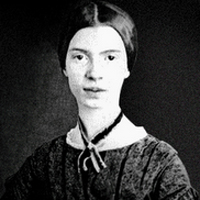I'm Nobody! Who are you? By Emily Dickinson: Summary and Analysis
This poem is her most famous and a gentle defense of the privacy she preferred. The present poem is often quoted as an example of modesty of Emily Dickinson. The poem seems to be an illustration of Emily Dickinson's self-exile in a private world of her own. The result of her self-imposed exile was that she remained insignificant during her lifetime. She was nobody in the world.

Emily Dickinson (1830-1886)
The speaker of this short eight line poem is Nobody. The Nobody is out of reach of contact with the outside world and the public circle. The speaker lightheartedly raises a question to the reader ‘who are you?’ She makes sure stating ‘Are you – Nobody – Too?’ she then confirms that the reader is also Nobody and there are two of them who are Nobodies. She requests the reader not to mention their identity to the outside world because they may be oppressive and would flash all their private life to the public which she never liked. The speaker and the reader would also lose the chance to be different from the crowd.
In the second stanza, there is a touch of satire. Public life is dreary and cramped. It is like the life of a frog which tells its name all the time to the boggy ground where it lives. The speaker clarifies that it is dreary and dull to be Somebody. These Somebodies are public figures and later on they are compared to the frogs who just croak to the admiring bog. These public figures do not even try to say anything of significance; they just “tell one’s name,” that is, their own name so as to make themselves seem important figure. The “admiring Bog” is the group of people who permit the public figures to think that they are important and are praised. But the frog is not known outside the marshy bog.
I’m Nobody! Who are you? is an example of one of Dickinson’s more comical poems with a bitter satire to the public figures and the mass who creates public figures. The light tone of the poem, childlike use of words and sentences and the invitation to the reader on the side of the speaker clearly presents her satire to the frog like public figures. Dickinson might be talking about her lack of publication as a poet and thus in the outer world she is a Nobody and she hates being published.
This poem mocks the pretensions of the public world calling them a loud frog who advertise their own name to maintain the so called fame. This poem may be speaking towards Dickinson’s lack of publication, even if she published, she did it anonymously. The frogs are praised and made famous by a group of people to whom Dickinson call ‘an admiring Bog’. As the main theme of the poem is self-identity, for her all the members of this Bog lose identity and individuality. They cannot put their opinions, but just agree on what is said. Thus their life is dreary, dull and worthless. It has the hallmarks of a Dickinson poem, namely lots of dashes, unorthodox punctuation and beautiful use of words.
Cite this Page!
Shrestha, Roma. "I'm Nobody! Who are you? By Emily Dickinson: Summary and Analysis." BachelorandMaster, 13 Dec. 2017, bachelorandmaster.com/britishandamericanpoetry/i-m-nobody-who-are-you-summary-analysis.html.
Related Topics
Much Madness is Divinest Sense: Analysis
Renunciation: Summary and Analysis
Because I could not Stop for Death: Analysis
I Heard a Fly Buzz: Summary and Analysis
After Great Pain, a Formal Feeling Comes: Analysis
Success is Counted Sweetest: Summary and Analysis
I taste a liquor never brewed: Summary and Analysis
A Bird came down the Walk: Summary and Analysis
Hope is the Thing with Feathers: Analysis
I like to see it lap the Miles: Summary and Analysis
I had something that I called mine: Analysis
If I should Die: Summary and Analysis
These are the days when the Birds come back
What Inn is this: Summary and Analysis
Exultation is the going: Summary and Analysis
Of Bronze-and Blaze: Summary and Analysis
A Clock Stopped: Summary and Analysis
I felt a Funeral, in my Brain: Summary and Analysis
Safe in their Alabaster Chambers: Analysis
There's a certain Slant of light: Summary and Analysis
To fight aloud, is very brave: Summary and Analysis
I like a look of Agony: Summary and Analysis
Bring me the sunset in a cup: Summary and Analysis
The day came slow-till Five o'clock: Analysis
 |
bachelorandmaster.com |